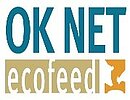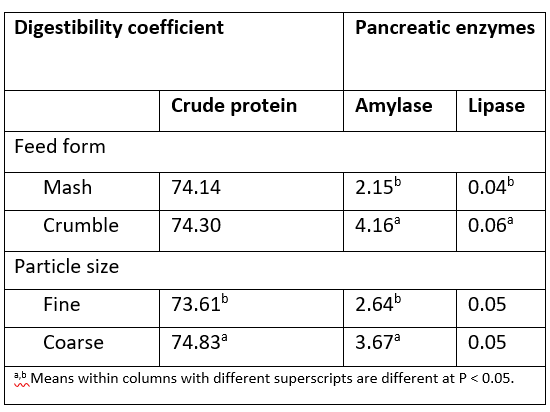Nutrient digestibility in poultry
Problem
Producing fully organic poultry feed of regional origin is challenging, particularly for protein sources that offer balanced amino acid profiles. Furthermore, not all nutrients present in feed are available for digestion.
Solution
To optimise feed rations, diets should be based on digestible nutrients, nutrient interactions and the influence of other feed characteristics.
Benefits
Feed rations that consider nutrient digestibility can better utilise regional feedstuffs, optimising health, body maintenance and production requirements. They help to improve animal welfare, lower costs and reduce nitrogen pollution from compensatory feeding.
Applicability box
Geographical coverage
Global with regional focus
Application time
Year round
Required time
Ongoing
Period of impact
For the life of the bird
Equipment
None
Best in
All poultry systems with a focus on feed of organic and regional origin
Practical Recommendations
- Regular analysis of all dietary components is recommended for a reliable nutrient profile of feed rations.
- To optimise the use of home-grown feed, the nutrient content of forage should be considered in diet formulation (Figure 1).
- High quality protein fulfils amino acid (AA) requirements, particularly lysine, cysteine and methionine.
- Diets formulated on digestible amino acids (DAA) are more effective than those formulated using total AA content.
- Digestibility of AAs is affected by dietary fibre content and the presence of anti-nutritional factors and protease inhibitors.
- Adding permitted enzymes to the diet can stimulate the digestibility of all nutrients, particularly protein and complex carbohydrates. They may also help birds to break down anti-nutritional feed components
- Starch (simple carbohydrates) is the primary energy source for poultry and is generally well digested.
- Complex carbohydrates in grains (wheat, barley, rye and oats) increase viscosity which negatively affects digestive processes and nutrient absorption.
- Fibre is poorly digested but helps to slow down the passage rate of other nutrients in the gut, improving digestion of all nutrients. A high intake of fibre can risk a reduction in total intake so restriction may be necessary.
- Fat digestibility is linked to the presence of other dietary components, and minerals in particular.
- Fat improves feed palatability and is required for energy and the absorption of fat-soluble vitamins A, D, E, and K.
- Age of bird influences fat digestibility with older birds being better able to digest fat than younger birds.
- As with fibre, fat can reduce feed passage rate (influenced by fat type and quantity) through the gut, enhancing digestion of all nutrients.
- Processing feeds can improve overall digestibility although finely milled feed reduces protein digestibility and pancreatic enzyme activity compared to coarser feed (Figure 2).
- Heat treatments can reduce anti-nutritional factors and, e.g., steam pelleting, can improve carbohydrate digestibility.
Further information
Reading
- Blair R. (2016) A practical guide to the feeding of organic farm animals. 5M Publishing Ltd., Sheffield UK.
- Ullah Z., Ali M., Nisa M., Sarwar M. (2015) Review Article. Digestible amino acids: significance and prospects in poultry. International Journal of Agriculture & Biology. 17: 851-859.
- Steenfeldt S., Hammershoj M. (2015) Organic egg prodcution. I: Effects of different dietary protein contents and forage material on organic egg production, nitrogen and mineral retention and total tract digestibility of nutrients of two hen genotypes. Animal Feed Science and Technology. 209: 186-201.
- Bozkurt M., Koçer B., Ege G., Tüzün AE., Bıyık HH., Poyrazoğlu E. (2019) Influence of the particle size and form of feed on growth performance, digestive tract traits and nutrient digestibility of white egg-laying pullets from 1 to 112 days of age. Poultry Science 98: 4016-4029.
- Check the Organic Farm Knowledge platform for more practical recommendations on animal husbandry.
About this practice abstract and OK-Net EcoFeed
Publishers:Organic Research Centre (ORC),
UKGL7 6JNCirencester,
Phone +44 (0)1488 658 298,
hello@organicresearchcentre.com,
www.organicresearchcentre.comIFOAM Organics Europe,
BE1000Brussels,
Phone +32 2 280 12 23,
www.organicseurope.bio,
www.organicseurope.bio
Contact: lindsay.w@organicresearchcentre.com
Permalink: https://organic-farmknowledge.org/tool/38640
https://orgprints.org/view/projects/OKNetEcoFeed.html
This practice abstract was elaborated in the Organic Knowledge Network on Monogastric Animal Feed project. The project is running from January 2018 to December 2020. The overall aim of OKNet EcoFeed is to help farmers, breeders and the organic feed processing industry in achieving the goal of 100% use of organic and regional feed for monogastrics.
Project website: https://ok-net-ecofeed.eu/
IFOAM Organics Europe (project coordinator), BE; Aarhus University (ICROFS), DK; Organic Research Centre (ORC), UK; Institut Technique de l'Agriculture Biologique (ITAB), FR; Research Institute of Organic Agriculture (FiBL), CH; Bioland, DE; Associazione Italiana perl'Agricoltura Biologica (AIAB), IT; Donau Soja DS, AT; Swedish University of Agricultural Sciences, SE; ECOVALIA, ES; Soil Association, UK.



This project has received funding from the European Union’s Horizon 2020 research and innovation programme under grant agreement No 773911. This communication only reflects the author’s view. The Research Executive Agency is not responsible for any use that may be made of the information provided. The authors and editors do not assume responsibility or liability for any possible factual inaccuracies or damage resulting from the application of the recommendations in this practice abstract

